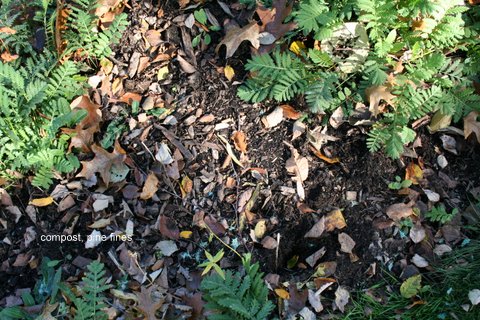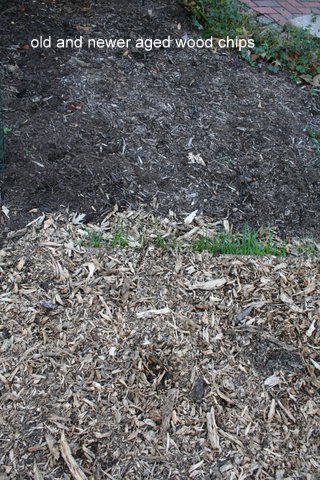by Lois Rose
I recently attended a talk by Linda Walker-Scott, an Associate Professor and Extension Horticulturist at Washington State University (see her blog theinformedgardener.com) Her talk about mulch and sustainable landscape provides the backbone for my comments.
Organic mulches are by far my own choice. I use many kinds of mulches, including straw (left to sprout its seeds for a few months before using),
compost from my husband’s heap,
bark chips, wood chips(aged, free from the city),
(By the way, let wood chips age before using them if you are concerned about disease. Add compost underneath the chips if you are concerned about nutrient deficiencies. Dr. Walker-Scott pointed out that well aged wood chips do not drain soil of nitrogen. Myth exploded.)
compost and manure,
and closely grouped living plant material.
Why Mulch? Beside providing nutrients to the soil, organic mulches are helpful to beneficial microbes, enhance biodiversity of “macrofauna”, help trees and shrubs get established, and improve soil structure, lessening compaction and allowing soil aggregates to form. (Tilling and digging can destroy the colonies of microbes, mycorrhizae, other important soil components.)
When to mulch: before annual weeds become established—fall or spring. Remove perennial weeds in early spring (easiest to pull or dig), then apply mulch. Better than pulling or digging is mowing or cutting to the ground. Remove everything to a brown bag away from your garden
Deep mulch decreases weed germination by limiting the amount of light that reaches seeds. Weed seeds can remain for years in the soil until—voila—exposure to light and moisture encourages them to get growing. Coarse mulch can help retain and increase the amount of water getting to the soil beneath. Weeds and plants that grow through the mulch are easier to pull. Meanwhile the mulch is preventing erosion.
Thick layers of mulch, 8-12 inches, are excellent for restoration sites and control of invasive weeds like ivy. She recommends heavy layers (4 to 6 inches) around ornamentals for a low-maintenance landscape. I was taught that no more than 4 inches of mulch should be applied to the soil around shrubs and trees. This is definitely a different take on depth of mulching.
Deeper mulch, and courser mulch, gives the most benefit and the fewest drawbacks.
Mulching No-No’s: Keeping mulch away from trunks of trees and shrubs is necessary to prevent rodents, insects and diseases from being given a free ride. Never pile mulch on perennials, only around them. “Volcano” mulching, where the ignorant landscaper piles mulch up against the trunks of trees, making it look like a volcano, is definitely a no-no. The question is: when you see this on the street—do you stop your car, go over to them and say, “what the hell are you doing?” Or, do you give them a sheet printed with the proper way to mulch. Or do you stop door to door to let your neighbors know that they are damaging their trees and shrubs by doing this?
I have been sorely tempted. Considering that you are investing in the hopefully long life of your tree, why treat the trunk this way?










